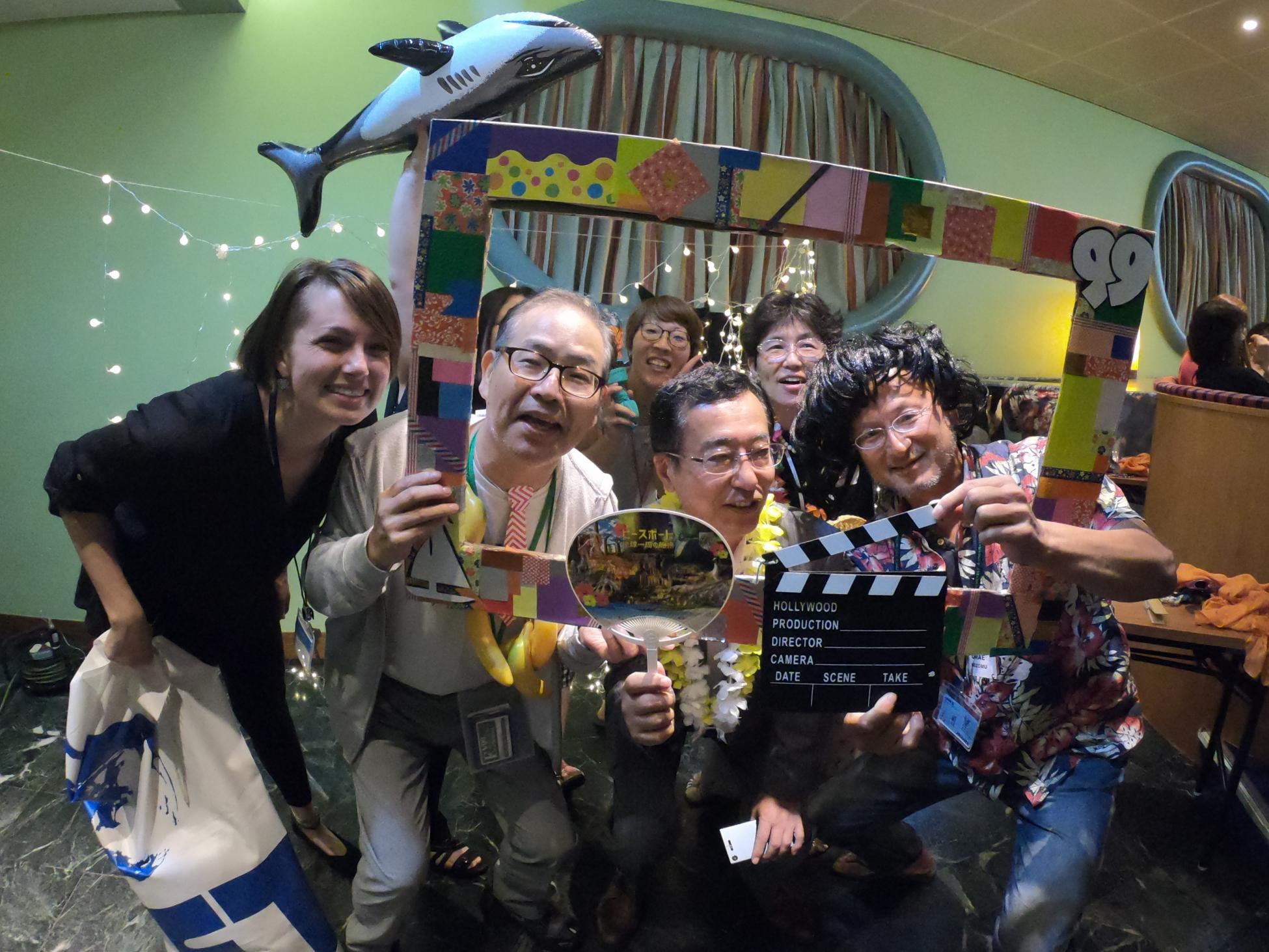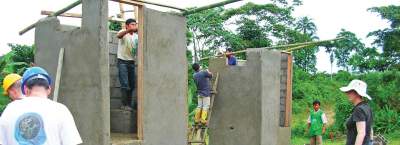I have never been in an environment as international as Peace Boat. As I walk around the ship, I hear Indonesian, Spanish, Japanese, Arabic, German, Turkish, English, Italian, French and Chinese. People have come from around the world to join the 99th Global Voyage, and as a result, we have created a very intimate international community aboard Peace Boat.
To give a little context, this 108-day voyage marks the 35th anniversary of Peace Boat’s first cruise. From its inception in 1983 until 1990, Peace Boat only did cruises that travelled around Asia, which lasted for two weeks at a time. It wasn’t until 1990 that the first Global Voyage (around the world trip) embarked from Greece.
Why Greece? The only ship that Peace Boat could charter at that time happened to be a Greek ship. This meant that the Japanese passengers had to fly to Greece to commence their around-the-world journey.
In 1994, due to the popularity of the Global Voyages embarking from Greece, Peace Boat announced that it would embark on a Global Voyage from Japan for the first time in its 11-year history. There was so much interest in joining the voyage, that Peace Boat had to charter a second ship to accommodate all of the Japanese passengers. The second ship embarked 44 days after the first one.
Meet the staff of Peace Boat
Since then, Peace Boat has gone through constant transformation and re-birth to meet the ever-changing needs of the Peace Boat participants and the local communities it serves around the world.
There are many moving pieces when it comes to ensuring a successful and sustainable voyage. The roles on the ship are divided into three major parts: Japan Grace Staff (the company that manages all tours in port as well as the passenger-side administrative duties onboard and at reception), Ocean Dream Staff (comprised of officers, seamen, and crew responsible for the day-to-day operations of the vessel itself), and Peace Boat (the NGO responsible for creating various cultural, educational, and social opportunities for passengers on board).
I have joined Peace Boat (the NGO) as a GET (Global English/Espanol Teacher) volunteer English teacher. Peace Boat aims to promote intercultural exchange, and the GET program supports that aim by giving students the linguistic keys to connect with the local people of the communities we will visit around the world.
I am one of nine volunteer teachers, each of us coming from countries all around the world. For some of us, our first language is English, for others it is Spanish or Italian. Each of us have unique backgrounds, with some of us having been teachers our whole lives, and others who have transitioned from fields such as radiology or chemical engineering.
A day in the life
In the sweltering heat of Yokohama, we boarded the ship in late August to begin our onboard orientation before the arrival of passengers. For those first few days, we learned more about the GET philosophy for teaching English and Spanish, met the volunteer communication coordinators who are responsible for all the translation and interpretation onboard, and began thinking ahead to the different events we wanted to host throughout the voyage.
A week or so into the voyage, we began teaching our classes. Group classes are usually comprised of five to seven students and each teacher is responsible for teaching one to three of these group classes throughout the voyage. Most teachers are also responsible for one-on-one private lessons that meet a couple times per week. GET teachers also hold “open” events on the ship, where non-GET students can join language workshops and classes.
Though my day-to-day schedule varies greatly, here is an example of a day in the life of a volunteer GET teacher:
8:00-8:40" Private English Lesson
9:00-10:00: Lesson Prep
10:00-11:00: Presentation by a guest lecturer
11:20-12:20 Group English Lesson
12:30-1:30 Lunch
2:00-3:00 Lesson Prep
3:00-4:00 Group English Lesson
4:00-5:00 English/Spanish Study Lounge
5:00-6:00 GET Teachers Team Meeting
6:30-7:30 Dinner
7:30-8:30 Presentation by a Guest Lecturer
9:00-10:00 Event Prep
10:30-11:30 Salsa Night
As you can see, though a GET volunteer teacher’s number one priority is to provide quality lessons for our students, it is also possible to attend various educational and social events around the ship.
While there is a lot of work and many long days that go into being a GET volunteer teacher, it has been an extremely rewarding experience thus far, and I can’t wait to share more in the future.
Add this article to your reading list




